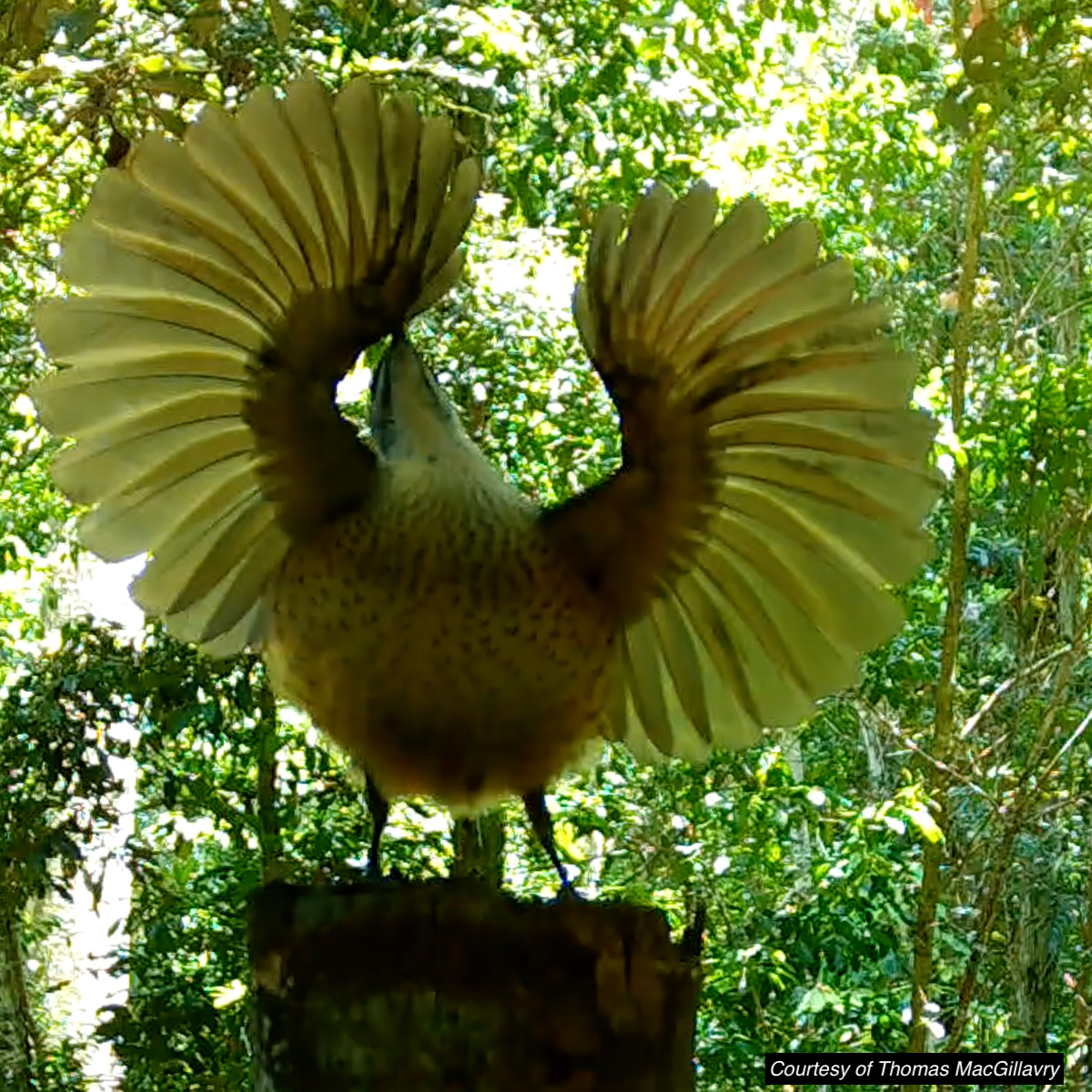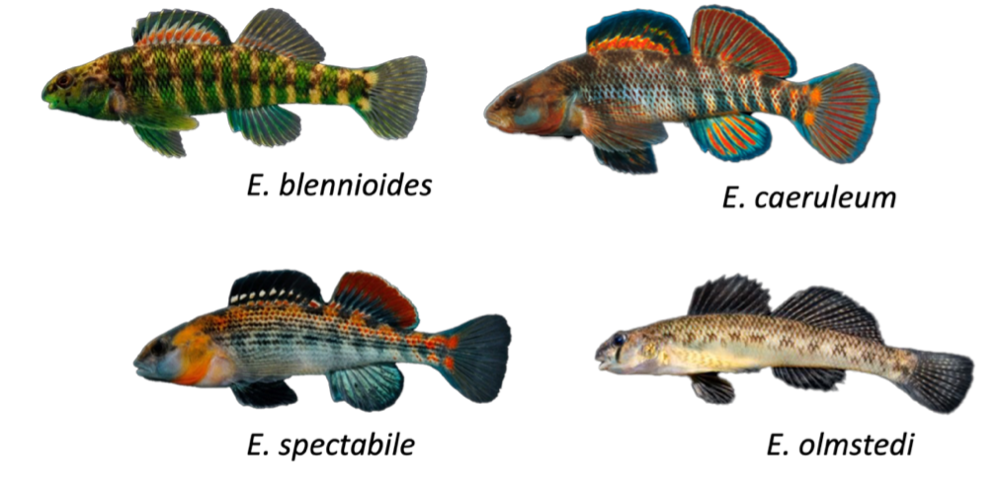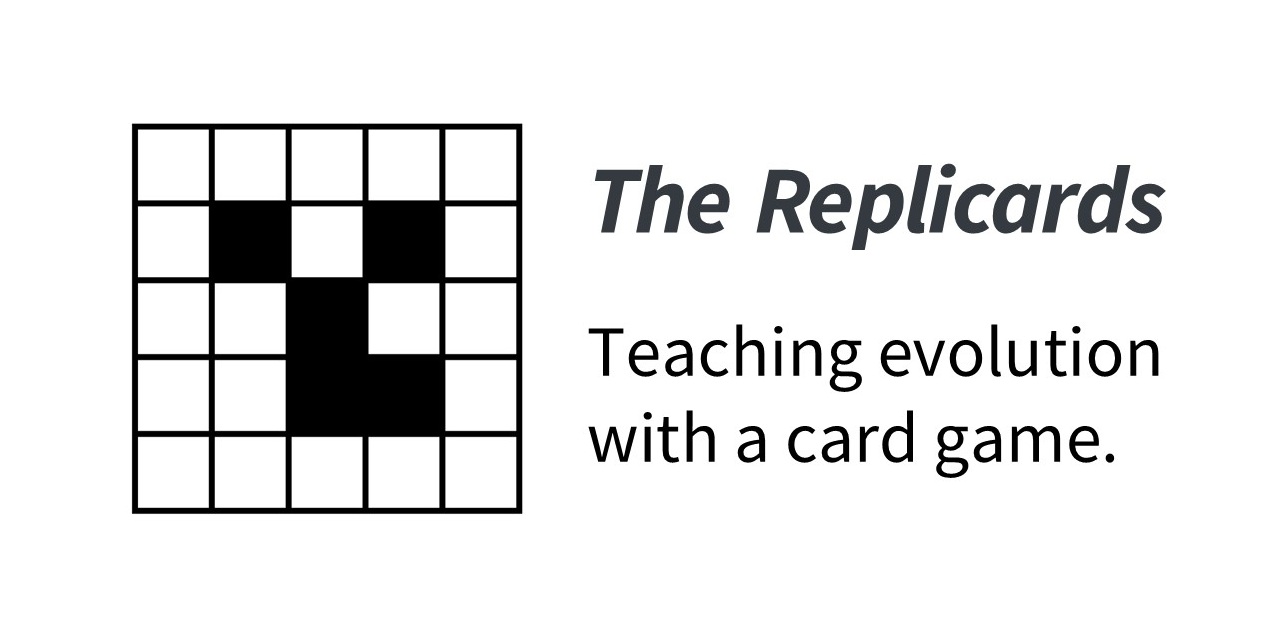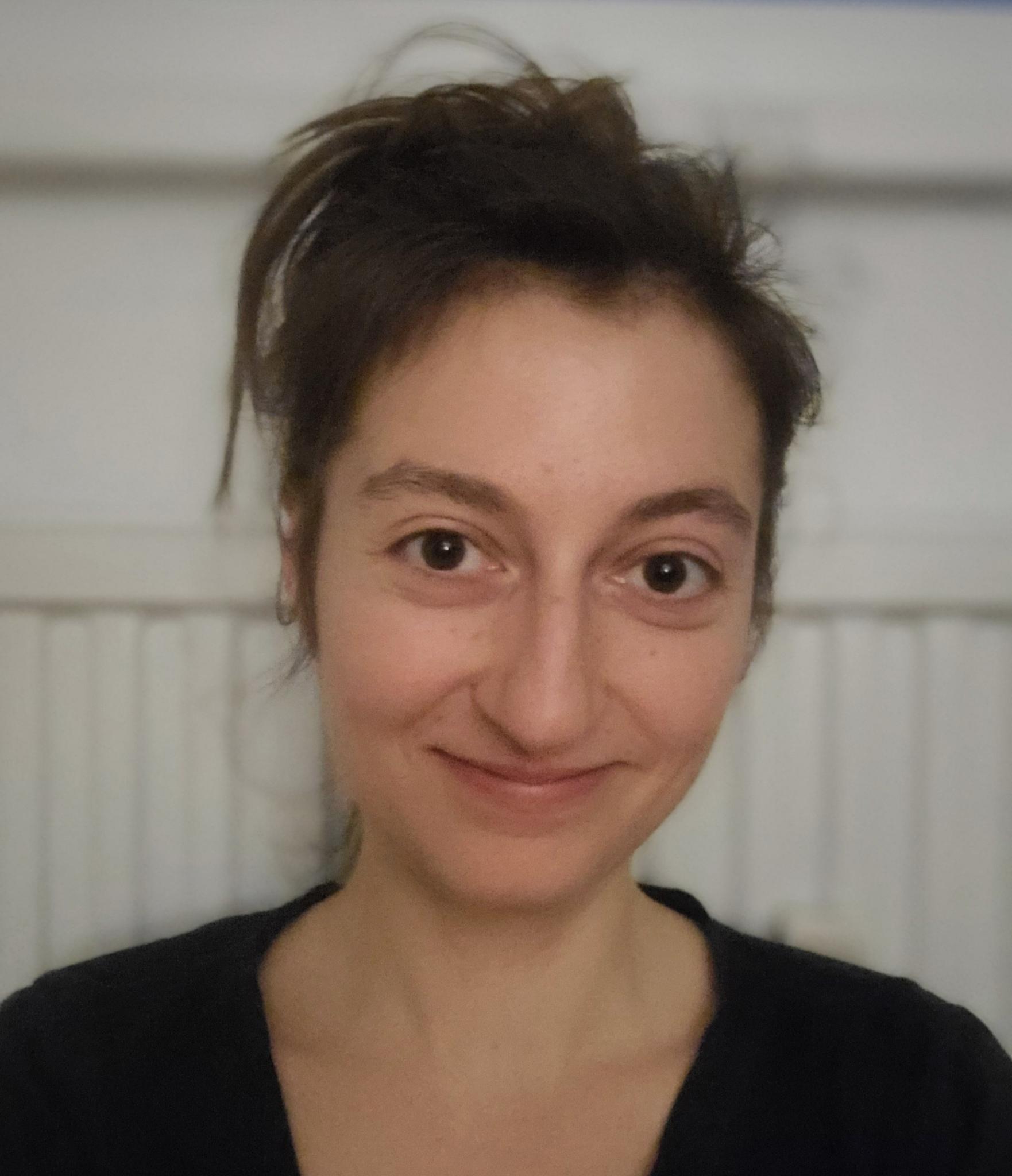🚨 Current openings
- 🐟 Data-science project for BSc/MSc students: How many different fish species occupy a specific river? Are they around the whole year or do they follow seasonal migratory patterns? How quickly can we detect invasive species?
Can we leverage observations reported online, e.g. on iNaturalist, to complement traditional river surveys?
➡️ Internship description: [English] and [French].
🎓 Beside current openings, if you are interested in my ongoing projects or have related ideas you would like to explore for your bachelor’s or master’s thesis or for an internship, please reach out so we can discuss it!
Ongoing projects
Automatic stress assesment in a wild bird 🐤
In collaboration with Caroline Deimel (+ funding from the Wild Animal Initiative).
More details to come.
Role of the dark plumage in Rifle birds 🪶
Using avian vision modelling, we are investigating the sensory function of exceptionally black plumage in the displays of a bird of paradise—Victoria's riflebird—based on images of courting males collected in the field. We are comparing the visual properties of the adult and immature birds' displays to investigate their detectability.

Complex courtship behaviour in Manakin 🐦
Are manakins learning their nuptial parade from each other or is it genetically pre-determined?We are investigating this question with behavioural, spatial, and genetic data.

Evolution of visual sexual signals in darters 🐟
[DarterBase] I aim to examine a broad range of factors susceptible to promoting sexual signal diversity in Etheostoma (darters), a genus of fish species that exhibit diversity in morphology, habitat preferences, nuptial ornamentation, parental care, and spawning behaviour, as well as community composition and structure. [VAE] Using variational auto-encoders as models of the visual system, I plan to investigate the relationship between habitat characteristics and signal patterns of a species and assess the effectiveness of animal designs from the point of view of the individual recipient.

Past projects
Mate preference and natural statistics in darters 🐟
We designed and conducted several behavioural experiments to understand how natural statistics influence mate preferences in the Darter fish (Etheostoma). Our objective was to test the Sensory Drive prediction that fish resembling their habitats more should be preferred. We used a deep learning technique, Neural style transfer, to manipulate the similarity between male body patterns and their habitats The main idea relies on the principle that more frequent stimuli are easier (faster, more efficient) to process because the visual system has adapted to them. Could this 'ease' of processing some visual properties influence preference towards those properties? We use mate preference as a proxy to test this idea. For example, a potential mate whose appearance reflects to some extent the visual properties of their environment might be preferred over another mate that wouldn't or would less. This has interesting evolutionary implications in terms of mechanisms that could explain mate choice and/or mate preference.
Our study also demonstrates the potential of artificial intelligence in testing hypotheses about animal communication signals.
Our paper was recently published in Ecological Informatics, which you can find [here].
Strength of preference for conspecifics in darters 📈
Previous comparative analyses suggest that sympatry (whether species evolve in the same habitat) plays a key role in mating preference for conspecifics, which is a fundamental process to maintain species diversity. Our comparison of darter fishes (Etheostoma species) revealed that the link between assortative mating and sympatry and the link between assortative mating and sex is not as predictable as classical interpretations of natural (reinforcement) and sexual selection might suggest. By challenging conventional expectations in terms of assortative mating, our meta-analysis offers a more nuanced view of this complex phenomenon. It also positioned Etheostoma as a great genus to investigate mating preferences, given its diversity in terms of occupied habitats, species overlap, or parental care behaviour.
Our paper is published in Ecology and Evolution and can be accessed [here].
Attractiveness of visual patterns in humans 💻
“Processing bias” has been proposed as a pre-existing perceptual bias that could explain the origin of preferences and the evolution of sexual signals. One of its predictions is that stimuli that resemble the underlying spatial patterns of natural scenes, such as background-matching patterns, will be processed more efficiently and experienced as pleasant, or attractive. This hypothesis is rooted in information theory and supported by a substantial body of research in psychology and neuroscience, largely untapped in evolutionary biology. Here we provide the first evidence that camouflage patterns are attractive. In a series of online experiments, we found that abstract patterns are more attractive when they match their background, setting the stage for camouflage as an evolutionary precursor to sexual signalling. Our results therefore challenge conventional assumptions about the relationship between natural and sexual selection in signal evolution, and they generate new predictions about the role of the environment in animal communication. Our paper is currently under review but its preprint version is on bioRxiv: [here].
Understanding how the primate brain processes tridimensional visual information that is extracted from binocular disparities 🧠
Binocular disparities are the small differences between the eye's projections of a visual scene that underlie binocular depth perception
During my PhD studies, we conducted a functional neuroimaging (fMRI) study in macaques 🐒 to identify brain areas that would respond more strongly to natural motion-in-depth compared to scrambled motion. We found a set of areas that we described in this [paper]. This highlighted the need to do more research involving 3D motion, as most studies on motion are done with planar or 2D motion, which limits our understanding of visual processing.
In another fMRI study, we asked whether some brain areas would be more strongly activated when the subject perceives a stimulus that is made of visual properties that are more frequent in natural scenes. We showed surfaces that were either slanted or tilted in depth and compared brain responses to those different configurations. Our macaque subjects showed different responses, making the results difficult to interprete. We wondered whether the angle of the surface inclination we used should be more personalised to reflect individual differences. This requires testing the visual threshold of depth perception of our subjects using a psychophysics paradigm. Spoiler: This is a very long procedure and we are still collecting the data! In the meanwhile, we could already compare the data we obtained from one macaque subject to our human participants and, great news, they are similar! Check the poster we presented at the Predictive Brain Conference to know more: [Poster].
Community projects
Replicards 🧬
Together with Elia Mascolo, we created an interactive game for highschool students to demonstrate how replicants can inherit mutations and undergo evolution by natural selection if the inheritable characteristics can affect their reproductive success.We made the content publicly available and freely re-usable on this [website].

Magazine Perspectives 📖
Since 2020, I have been involved in the content creation of the magazine "Perspectives" for Fresco, a French national organisation involved in popularising cognitive sciences, while targeting diverse audiences.I coordinated a thematic issue on altruism in animals for the first issue and am currently an editor for the second issue.
You can access the first issue here (in French): [Numero 1].
